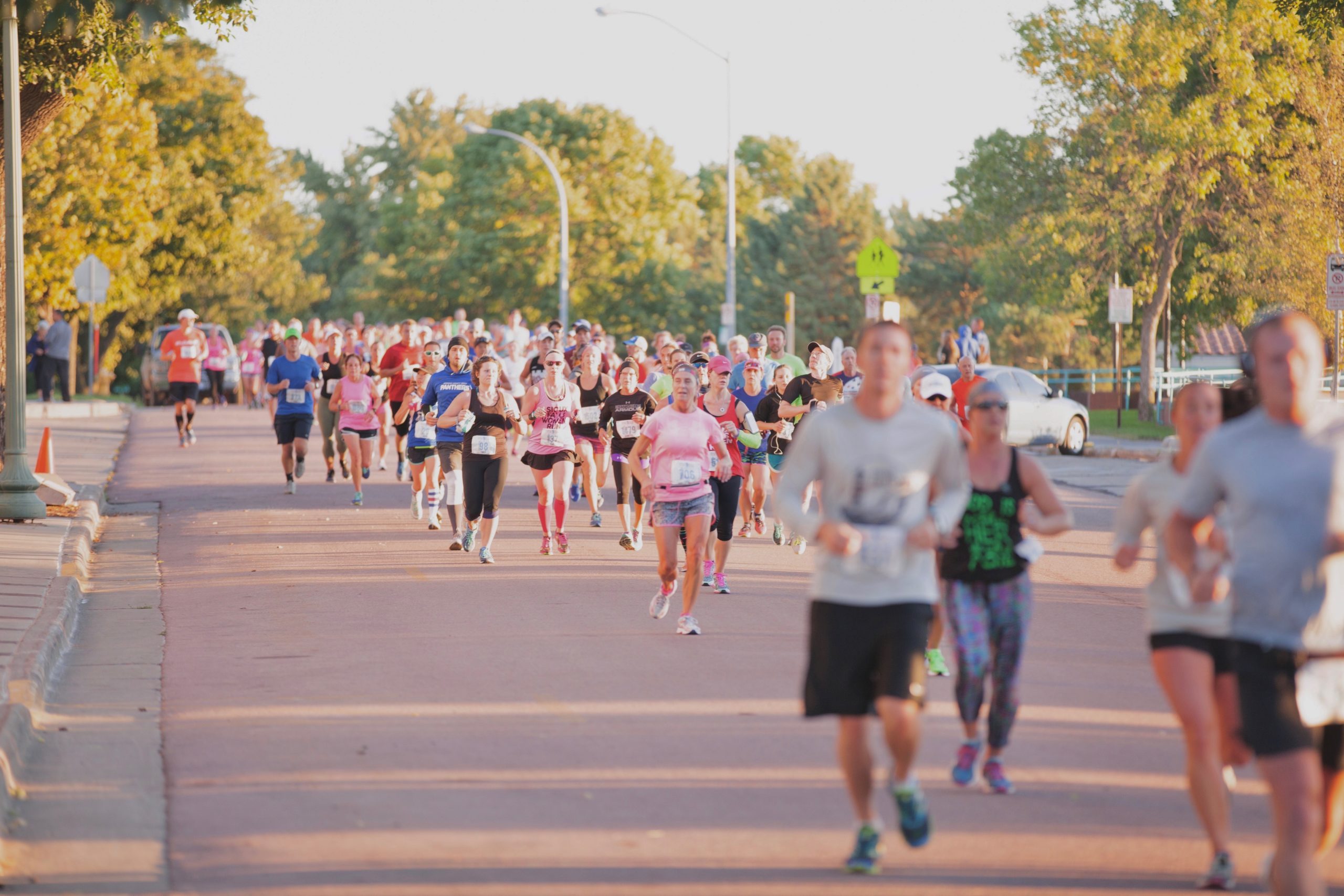Runners tend to want to run faster. It is a goal most often connected with working harder and putting in more time.
More sweat, in other words. And more pain.
No one associated with the Sanford Sports Runners Coaching Program (formerly Sanford POWER) would skip over dedication as a huge factor in getting better. But it’s also about training smarter.
In short, smart training is healthy training. It also factors in present fitness levels and long-term goals.
“We look at runners’ present fitness level — what can we safely do to help them get faster?” said Al Kraft, lead strength and conditioning specialist for Sanford Sports Performance in Fargo, North Dakota.
Kraft, in company with Sanford senior strength and conditioning specialist Kendall Railing, devises plans for runners and those who intend to start running.
The program aims at improving training methods with progressions that target personal goals.
“We like to tailor to the times and the days that work. We want to create the load they want to carry,” Railing said. “We all have commitments, whether it’s work or family or 101 other things, so we want to have a plan that fits their lives.”
Running program keys
Every plan is different, then, but there are three specific areas common to every effective training regimen:
1. Increase your VO2 max.
“It’s basically a measurement of how much oxygen your body can take in and use when you exercise,” Kraft said. “It’s about training your heart to be very strong.”
Typically, it involves working on becoming capable of running for a longer period of time. If 10 minutes is the limit, work on getting up to 11.
Improving VO2 also involves interval training. That is, run faster, then take a break before running hard again.
“You want to do this cautiously,” Kraft said. “About 80% of runners deal with injuries at some point, so you don’t want to overtrain.”
2. Raise your lactate threshold.
When a runner starts working harder and isn’t getting enough oxygen to their muscles, the body produces lactate. It’s the burning sensation that can come with serious exertion.
“It’s not necessarily bad, but it does force you to slow down,” Kraft said. “There are specific workouts you can do to raise your lactate threshold.”
3. Increase your running speed.
This can include improving your running economy. That is, developing a stride that gets maximum distance out of energy spent. It also includes strength training, running hills and intervals.
“If you want to run faster, at some point you have to train faster,” Railing said. “It’s not all the time, but once or twice a week you need to run shorter distances at a faster speed.”
In some ways, running is a skill to be developed. Like getting better at golf or basketball, for instance. The running program can help with that.
“If you just want go out and run, that’s fine,” Railing said. “But if you want to become more efficient and effective in your speed and your mechanics, we have drills that can really help with that.”
Staying healthy
A key part of any plan, regardless of goals, is getting better in such a way that minimizes the risk of injury.
“Some runners are really blessed,” Kraft said. “They’re just born to run. They can run twice a day every day of the week if they want and not get injured. Most people can’t do that. The good news is that most people can get into pretty good shape running three times a week.”
The program includes an initial consultation that gives the runner an opportunity to explain what it is they’re running toward.
“That’s where a lot of the coaching comes in,” Kraft said. “If somebody is getting off the couch and they want to get to where they can run a 5K, we’re going to come up with a plan that is a lot different that if we’re coaching a college runner who is trying to improve their marathon PR.”
Races coming up
Marathons take place throughout the year across the region, so there is never a bad time to tap into the expertise provided by the Sanford Sports Runners Coaching Program.
Every program is tailored to the individual. Regardless of age or running level, there is a program available that will emphasize maintaining health while improving times.
“Communication is the key to the program,” Railing said. “Feedback on both ends is crucial. That definitely goes for the kids I work with and the adults, too. It leads to accomplishing goals and a positive experience.”
Learn more
- Diabetes diagnosis motivates runner to train differently
- Marathon week nutrition affects performance
- The wellness benefits of running
…
Posted In Bemidji, Fargo, Healthy Living, Running, Sanford Sports, Sioux Falls, Sports Medicine
